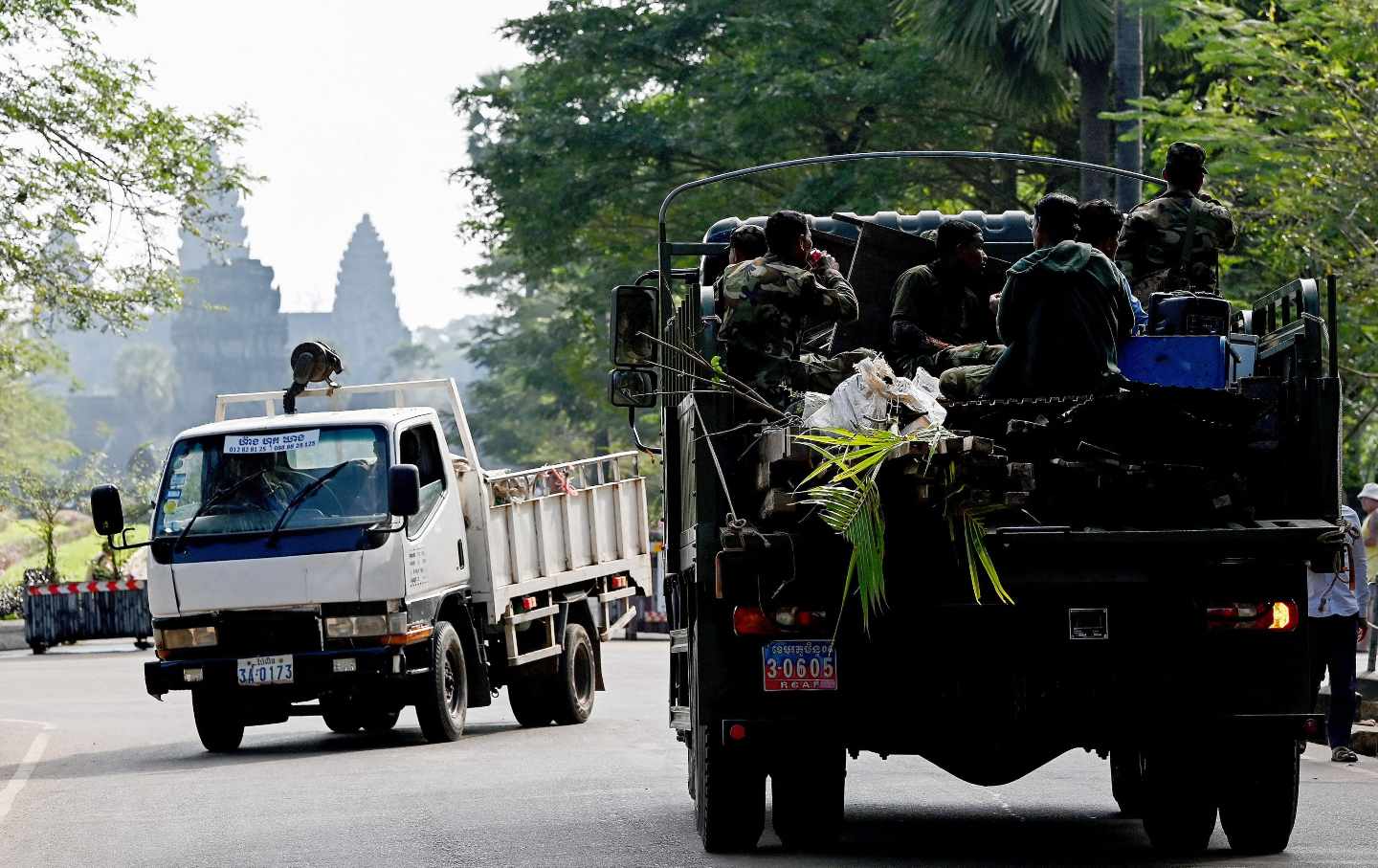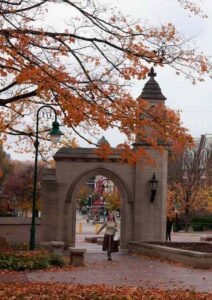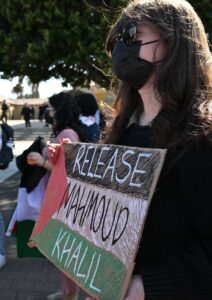October 23, 2025
Independent Media in Cambodia Is Collapsing. Washington Made It Worse.
By Nic Wong
The Thai-Cambodian border conflict is just one of the many stories going underreported in the country as Trump’s funding cuts leave citizens and journalists scrambling.

At 65 years old, Hob Touch lived through a genocide that erased a quarter of his country’s population, two brutal civil wars, and decades of uncompleted rebuilding. Then, in 2022, the Cambodian government seized his home at Angkor—a home he’d held for generations—and forced his family to move out.
In Run Ta Ek, a relocation site 25 kilometers northeast of Angkor, Touch leaned against a plastic chair. Deep wrinkles circled his eyes, his skin leathery from years of farming in the scorching sun to support his family. But in Run Ta Ek, there’s no land to farm.
“During the Khmer Rouge, I could at least grow rice to eat,” he said, his bracelet now strands of thread slipping down his wrist. “Here, there is no rice to grow, no jobs. Life is more difficult.” Since he was forced to move here, members of the government have yet to visit, he said.
Siem Reap is the Cambodia most Americans know: temples, tuk-tuks, selfies at Angkor Wat. But since 2022, more than 40,000 Cambodians—some of them Indigenous families who have lived for generations on the land—have been forced out of their homes around Angkor to make room for tourists. The region is Asia’s most visited UNESCO World Heritage site; 214,529 Americans came to marvel at the ruins in 2024.


